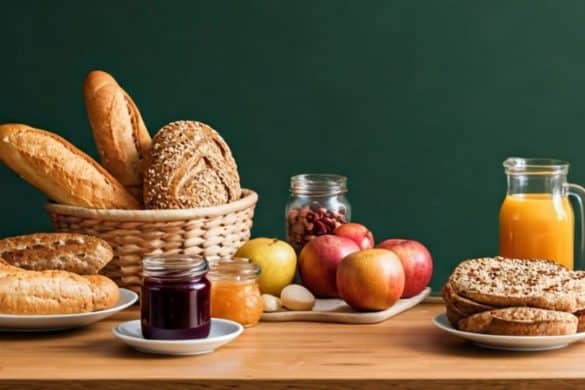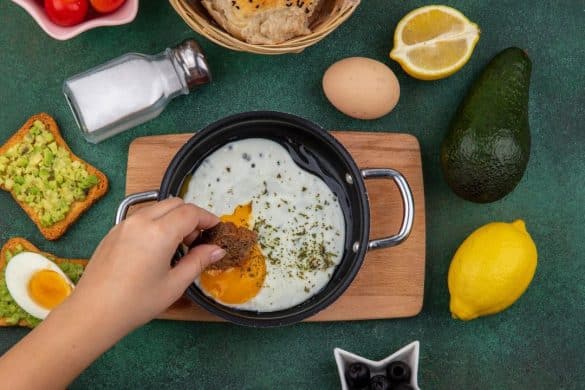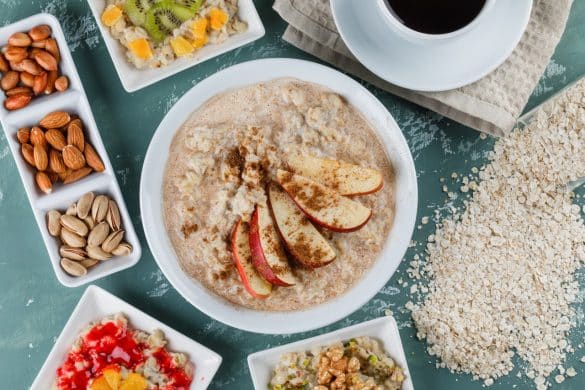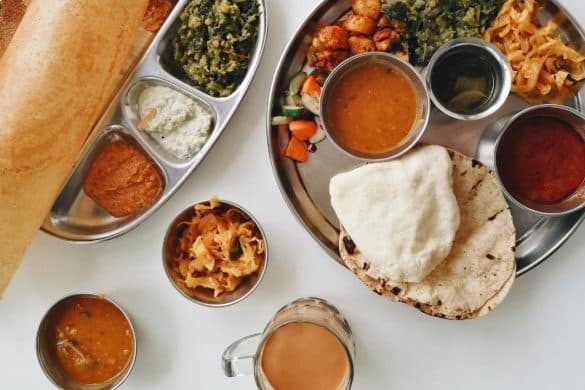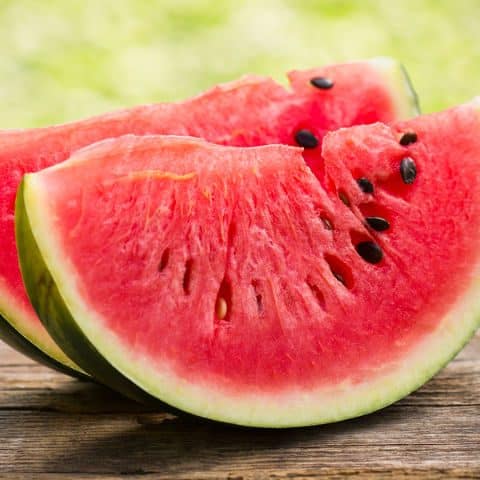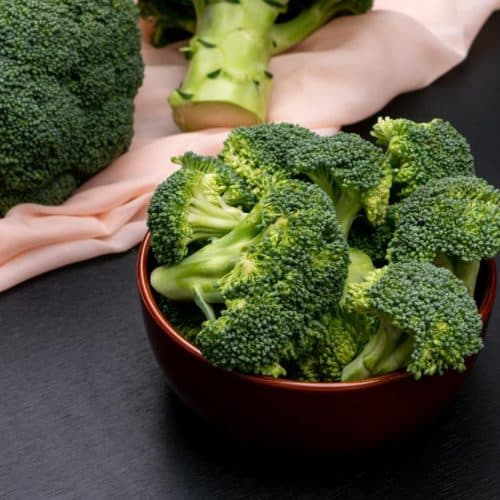There’s nothing quite as satisfying as a Full English Breakfast. It’s a hearty and comforting meal that brings together all your favourite breakfast items, perfectly cooked and served on one plate. Whether you’re bouncing back from a late night, gearing up for a busy day, or simply treating yourself on the weekend, a full English breakfast will definitely fill your tummy up and make your heart happy.
In this blog, we’ll break down each part of the Full English Breakfast—what makes it special, how to prepare it, and some interesting facts. We’ll also share an easy step-by-step guide on how to make your own Full English Breakfast at home, with all the ingredients and instructions. Plus, we’ll explore some of the regional variations found across the UK. By the end of this guide, even if you’re a beginner in the kitchen, you’ll be ready to cook this iconic British breakfast for yourself!
What is a full English breakfast?
A Full English Breakfast, also known as a ‘fry-up’, is a traditional breakfast from the UK and Ireland.
- It typically includes sausages, bacon, eggs, tomatoes, mushrooms, fried bread, and baked beans.
- Depending on the region and personal preferences, it may also have black pudding (a type of sausage) and hash browns.
- This hearty meal is perfect for starting your day; it is filling and gives you plenty of energy.
- Packed with protein, carbs, and fibre, it keeps you full for a long time. The mix of crispy bacon, soft eggs, and flavourful beans creates a delicious combination.
Whether it’s for breakfast or brunch, a Full English Breakfast is sure to satisfy your hunger and lift your spirits!
Main Components of a Full English Breakfast
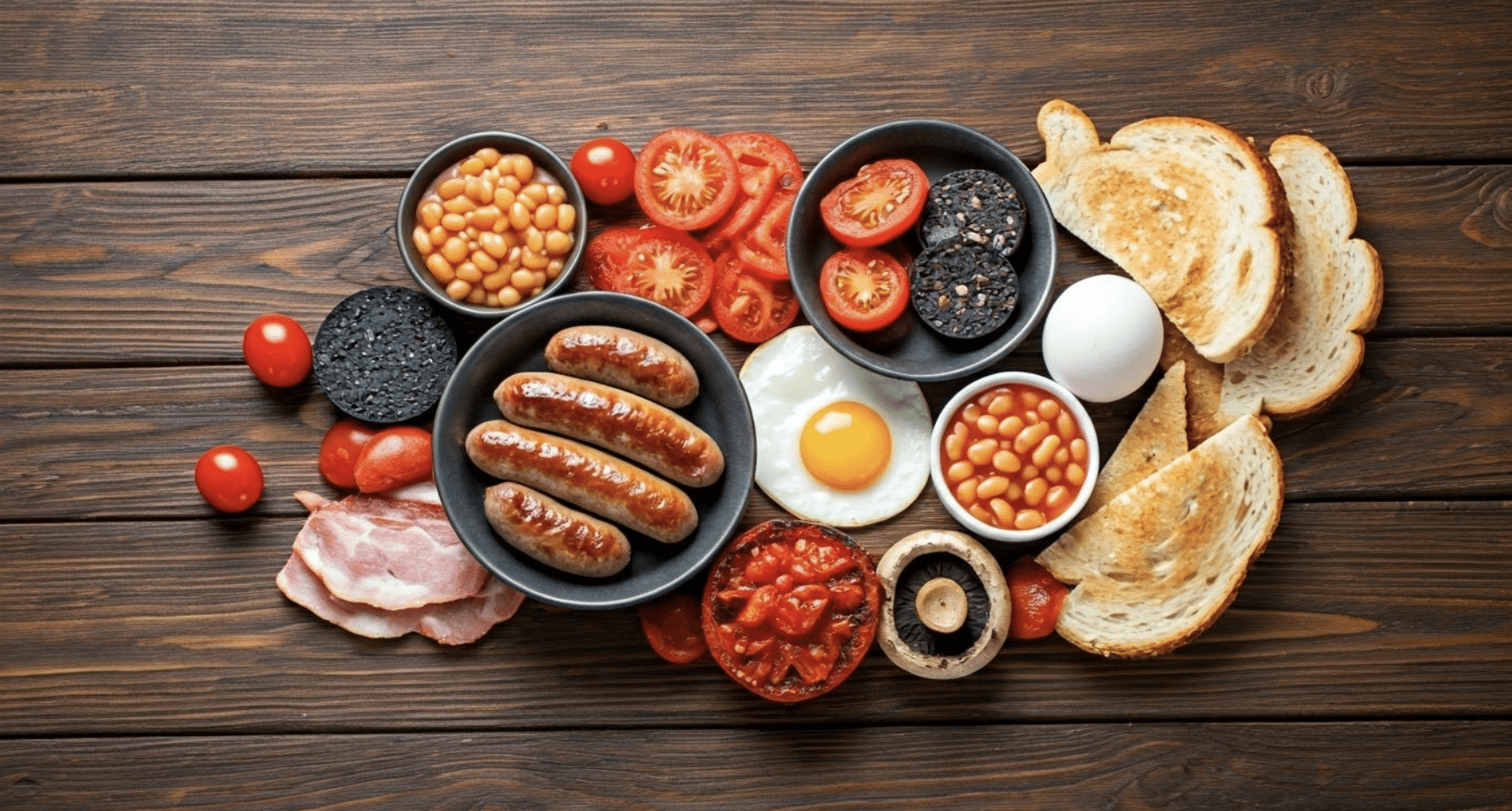
Ingredients for Full English breakfast
Each component of this breakfast plate plays an important role in creating a hearty and satisfying plate that can power you through the day. While variations exist based on regional preferences or personal taste, there are a few key elements that make up this iconic dish: sausages, bacon, eggs, baked beans, tomatoes, mushrooms, bread or toast, black pudding, and hash browns.
Each item is prepared in a specific way to bring out its unique texture and flavour, contributing to the overall richness of this classic breakfast. Whether you’re making a traditional Full English Breakfast, trying a baked Full English Breakfast for a hands-off option, or learning how to make a Full English Breakfast at home, understanding these components is key to perfecting this meal. Let’s explore each element and see how it comes together to create the ultimate breakfast experience.
1. Sausage
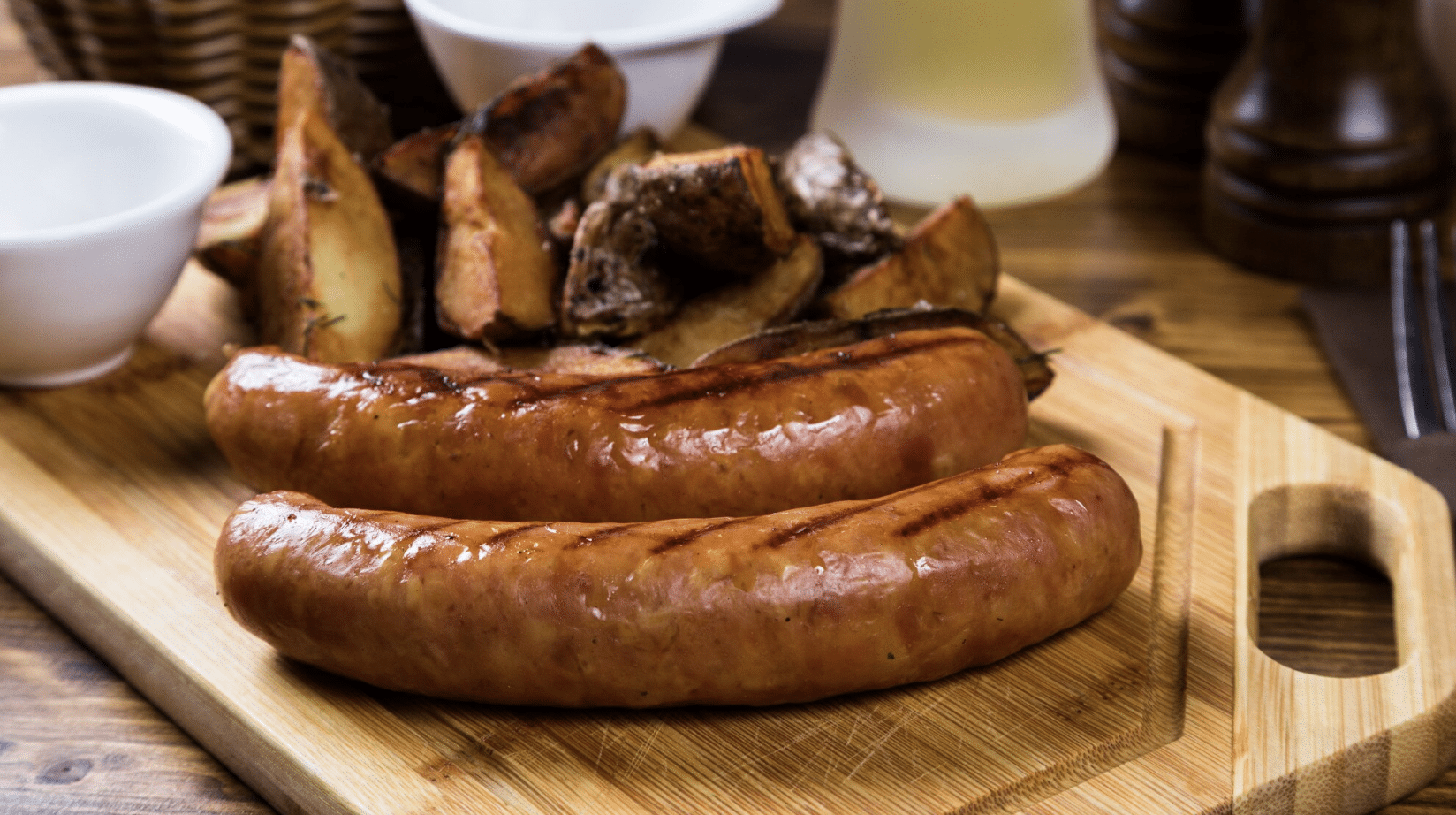
Sausage
Sausages are a must-have in a Full English Breakfast. The traditional British sausage, often called a “banger,” is made from coarse-ground pork, flavoured with herbs and spices. Popular varieties like Cumberland or Lincolnshire sausages are known for their robust flavours.
To get the perfect sausage, cook them in a frying pan on medium heat until golden brown on the outside, ensuring they remain juicy on the inside. These sausages are an essential part of the traditional English breakfast, bringing richness and meaty flavour to the plate.
2. Bacon
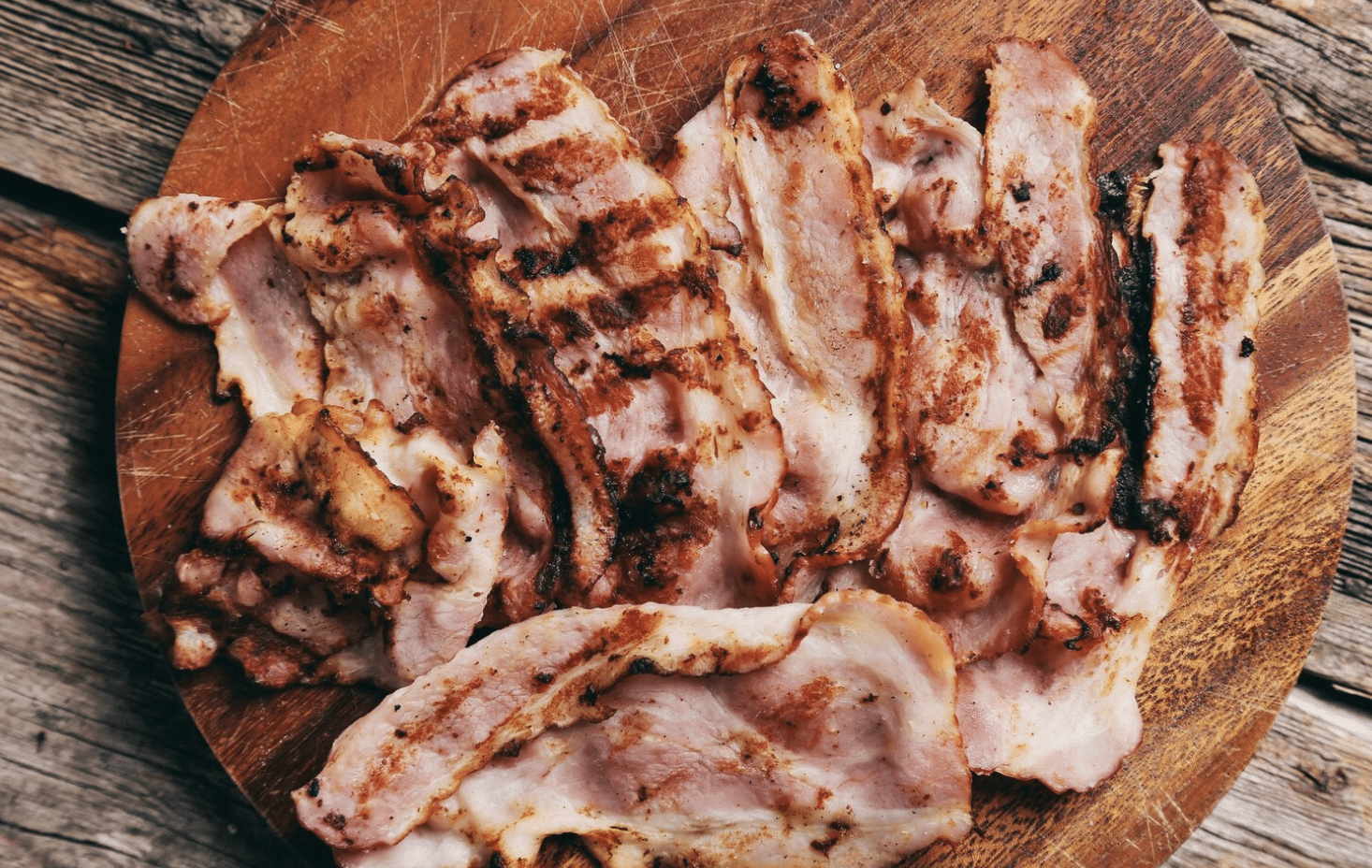
Bacon
Bacon is another core component of a Full English Breakfast. Unlike streaky bacon, which is popular in the US, British bacon is usually back bacon, cut from the pork loin with a bit of belly attached. This makes it leaner and more similar to ham.
The type of bacon used is crucial for getting the right texture—back bacon should be cooked until the fat renders and the edges crisp up slightly, but not too much to avoid toughness. Medium heat is ideal for cooking the bacon, ensuring a perfect balance between crispiness and tenderness.
Check out this amazing egg and bacon salad recipe!
3. Eggs

eggs
How can any breakfast plate be complete without eggs? In a Full English Breakfast, eggs traditionally feature sunny side up, with soft, runny yolks.
Cook your eggs in the same frying pan used for mushrooms or tomatoes, which enhances their taste. The medium-high heat will help you achieve the perfect golden edges on the whites while keeping the yolk runny. Some prefer their eggs cooked differently, but ensuring the whites are fully cooked is key for health and taste.
4. Baked Beans
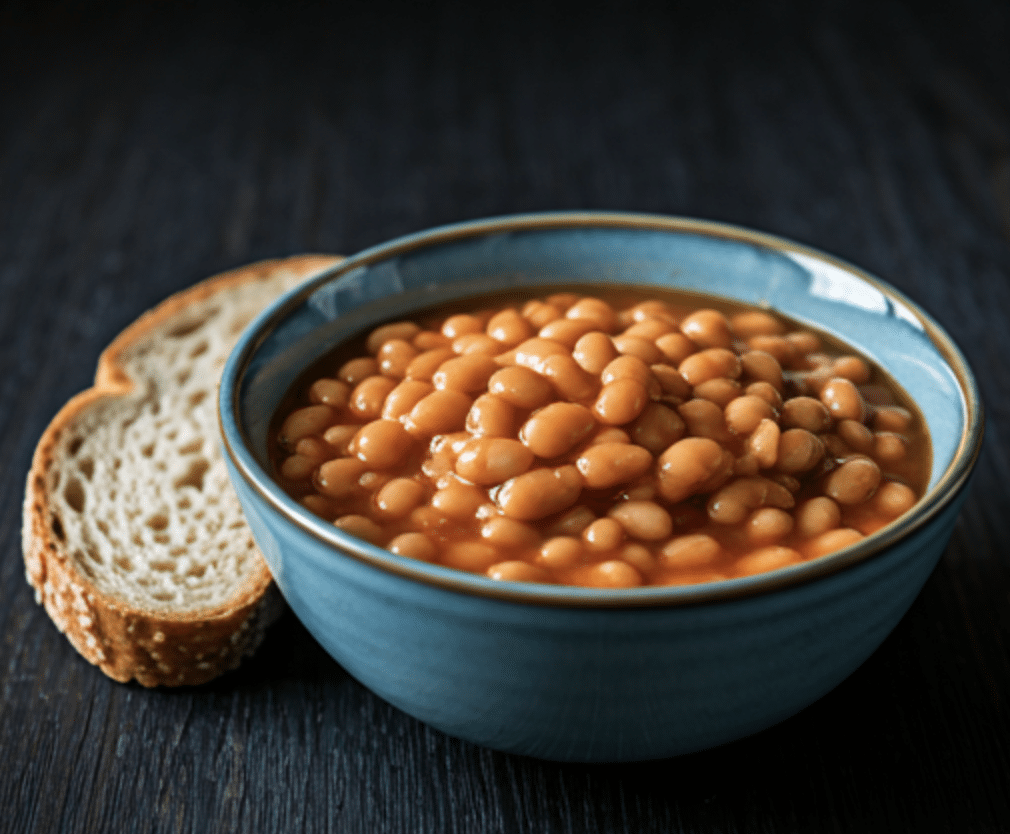
Baked Beans
A classic side, baked beans are essential in a Full English Breakfast. These beans, often served in a plum tomato sauce, add a sweet and tangy contrast to the savoury meats.
Heinz Baked Beans are a staple in many British food shops, offering convenience and flavour. You can heat them in a large pan or sheet pan for quicker preparation. They’re a great way to round out the meal and provide extra protein and fibre.
5. Tomatoes
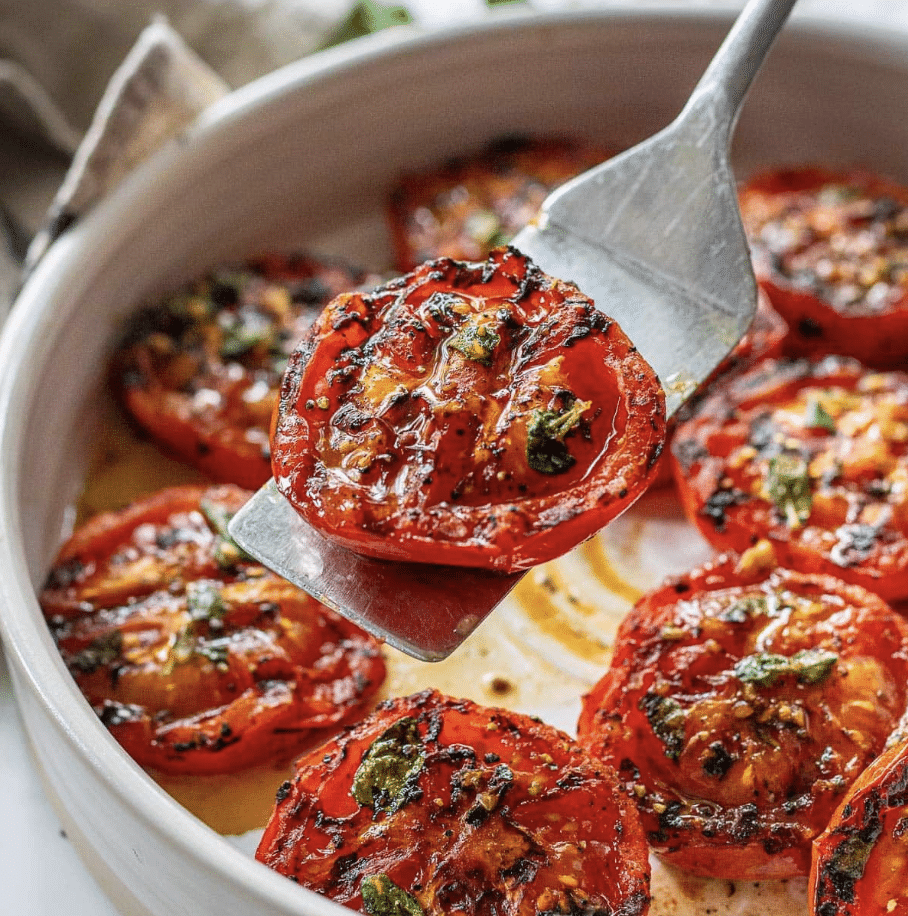
Grilled Tomatoes
Fresh, ripe plum tomatoes are halved and grilled or fried. Their juicy sweetness balances out the richness of the sausage and bacon.
Tomatoes are typically prepared in the frying pan after cooking the meat, allowing the tomatoes to soak up the remaining flavours. A great way to cook them is on medium-high heat for a quick sear, giving them a tender texture and bright flavour.
6. Mushrooms
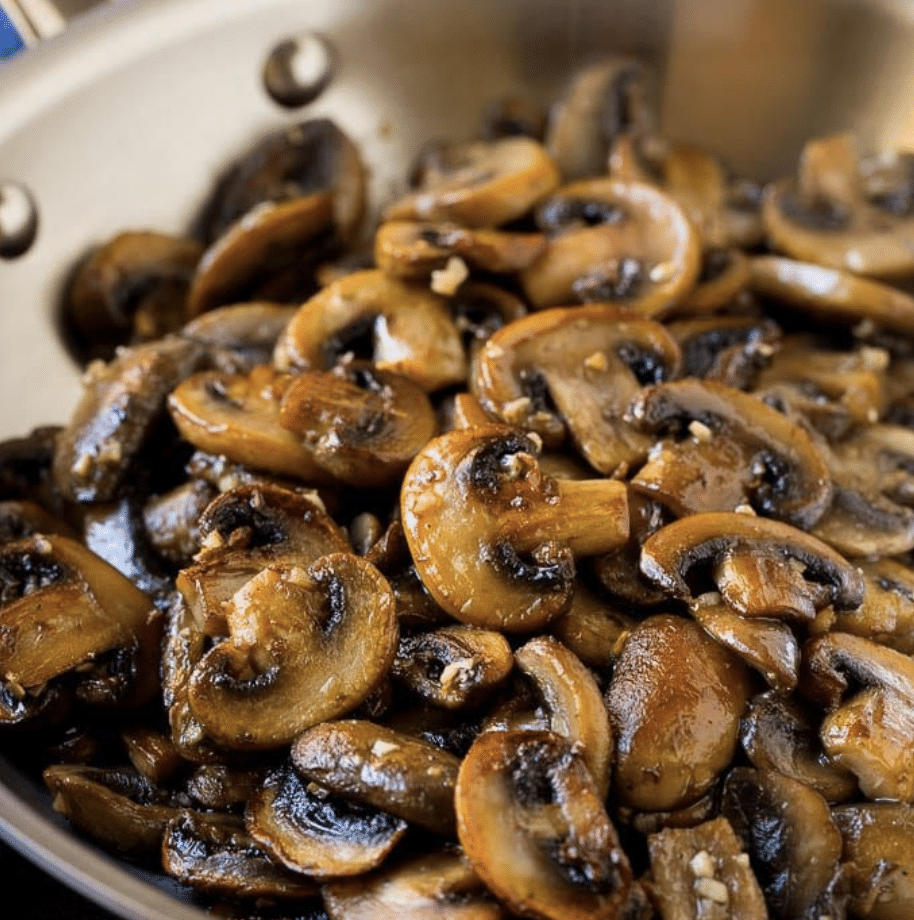
mushrooms
Mushrooms are another essential ingredient in a Full English Breakfast. They add an earthy, meaty flavour to the plate.
Cremini mushrooms are a popular choice, sautéed until browned and caramelised in the frying pan after the meat is cooked. This adds richness and a deeper flavour. Mushrooms are one of those components that really make a Full Monty, bringing all the textures together.
7. Bread or Toast
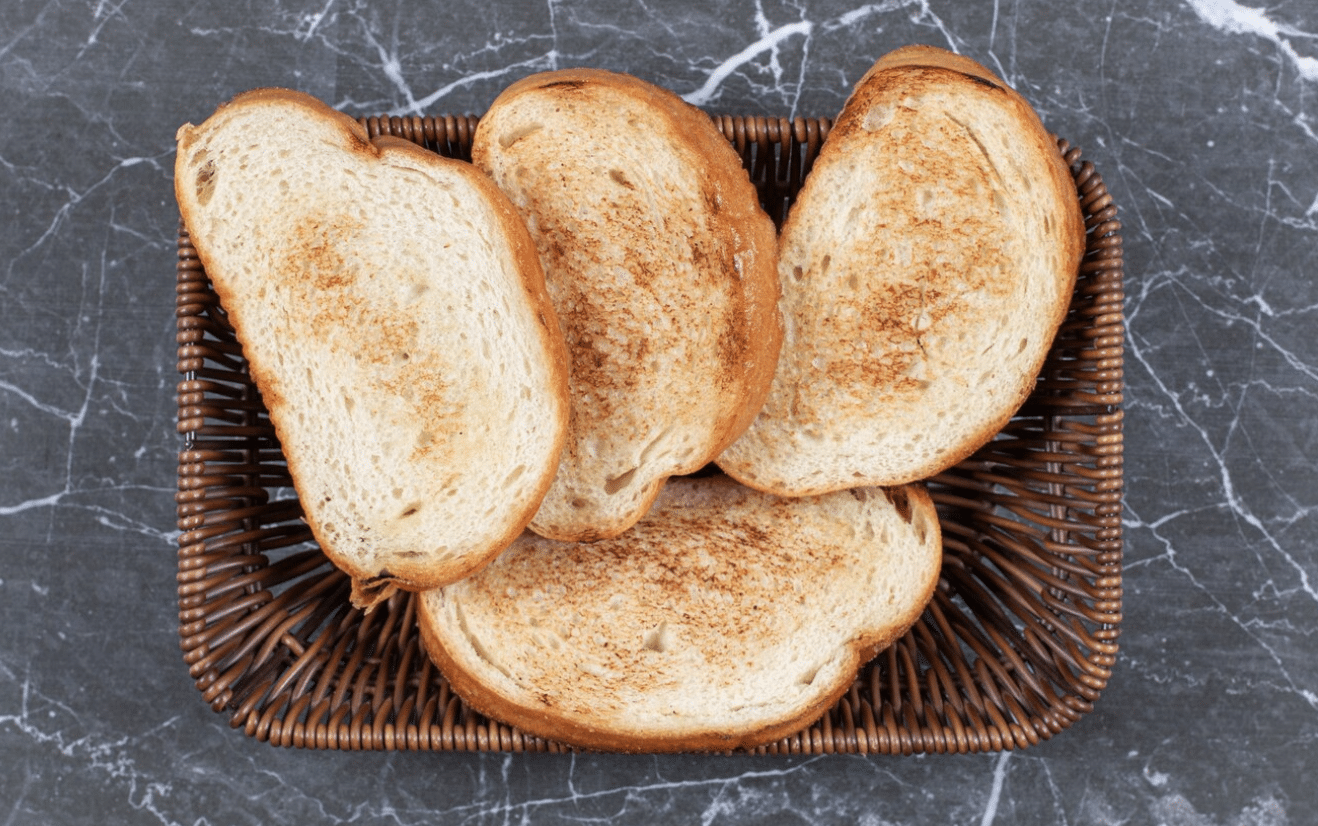
Bread or Toast
Unlike most breakfasts, where toast is simply made in a toaster, in a Full English Breakfast, the bread is fried in the far left in the pan from the bacon. This greasy spoon method turns the bread crispy and golden, soaking up all the delicious juices from the sausage and bacon.
Soda bread can also be used for a slightly different texture and flavour, often found in an Irish Breakfast. A large pan or sheet pan works well for frying bread to get an even and crispy texture.
8. Black Pudding
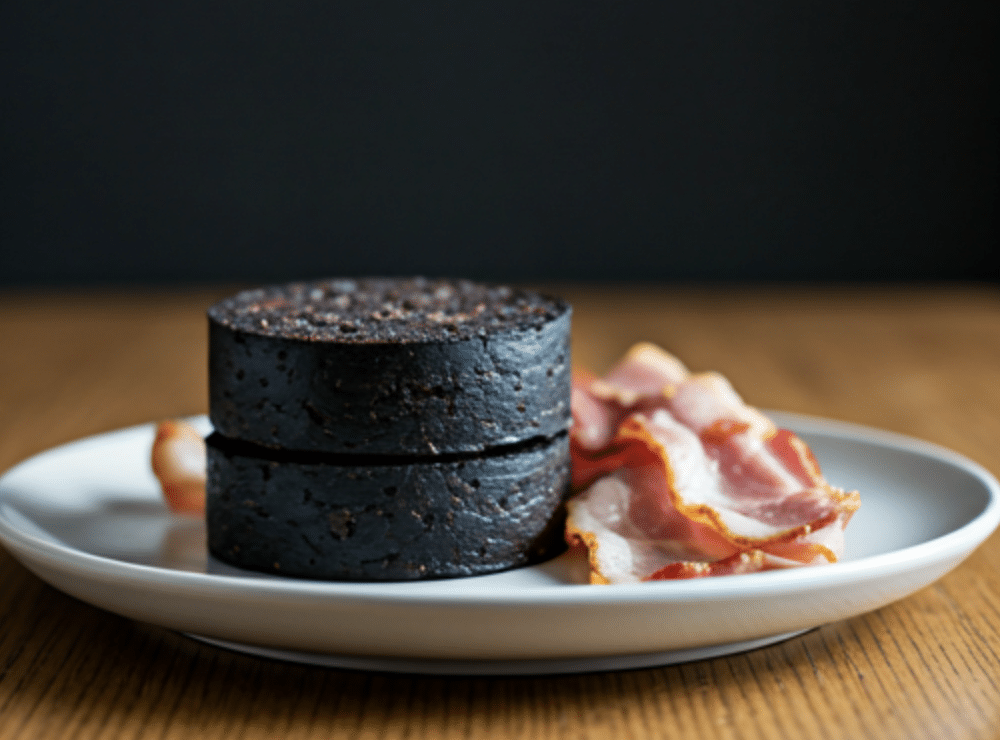
Black Pudding
Though it may seem unusual to some, black pudding (or blood sausage) is a traditional part of the Full English Breakfast for many. Made from pork blood, oatmeal, and spices, it adds a savoury, rich layer to the meal.
Frying black pudding in the pan until crispy on the outside while remaining soft inside is the traditional preparation method. It’s a hearty addition to an English breakfast, and while not for everyone, it has years of history in British food culture.
9. Hash Browns
Alt Text: Hash Browns
Although they aren’t strictly part of the traditional English breakfast, hash browns have become a popular modern addition. These crispy golden potatoes, usually fried in a frying pan or cooked from frozen, add a satisfying crunch to the meal.
Some may choose bubble and squeak, a mixture of leftover potatoes and cabbage, as a more traditional accompaniment. Either way, these crispy treats make a delicious addition to any breakfast plate.
How to Prepare a Full English Breakfast?
Making a Full English Breakfast at home might seem a bit tricky initially, but don’t worry—it’s actually quite manageable with a little planning and patience. The key is to juggle different ingredients, keep an eye on the heat, and make sure everything is cooked to perfection. Below, we’ll walk you through each step, from cooking sausages and eggs to getting the bread crispy, and we’ll also show you how to plate everything beautifully.
Must-Have Ingredients
To prepare a traditional Full English Breakfast, you will need the following ingredients:
- Breakfast Sausages (British-style pork sausages are best, but any good quality sausages will work)
- Unsalted Bacon (preferably back bacon, but streaky bacon is fine too)
- Eggs (fried, scrambled, or poached—whichever you prefer)
- Black Pudding (optional, but for an authentic touch, include it)
- Baked Beans (canned works perfectly; you can warm them up on the stove)
- Butter (for frying and spreading on toast)
- Olive Oil (for cooking)
- Cherry Tomatoes (fresh, cut in half)
- Button Mushrooms (sliced and sautéed)
- Tattie Scones (optional, if you want to make it extra special)
- Bread or Toast (white bread works best, fried in butter or bacon fat)
- Tomato Ketchup or Brown Sauce (optional for extra flavour)
For a vegetarian version, you can swap the sausages and bacon with vegetarian sausages or extra mushrooms and add more grilled tomatoes for that rich flavour.
Instructions You Need to Follow

Hash Browns
There is a set of instructions you must follow when it comes to preparing this iconic breakfast. Come check it out with us.
- Cook the Sausages and Bacon: Start by frying the sausages on medium heat in a large frying pan. Cook them slowly until they’re golden brown and cooked all the way through. Once done, remove them from the pan and set aside. In the same pan, cook the bacon until it’s nice and crispy but not too dry.
- Cook the Black Pudding and Mushrooms: In another pan, fry the black pudding (if using) until crispy on the outside and fully cooked. At the same time, sauté the mushrooms in a little olive oil or butter. Fry them until they’re golden and soft.
- Fry or Scramble the Eggs: In the same pan you used for the sausages, fry the eggs sunny-side up so the whites are crisp and the yolk remains runny. Alternatively, you can scramble the eggs if that’s your preference—just cook them on low heat, stirring gently.
- Heat the Baked Beans: Pour the baked beans into a small pan and warm them over medium heat. If you like, you can add a dash of Worcestershire sauce or some sugar to enhance the flavour.
- Toast the Bread: Toast your bread in a toaster or on the stovetop. For an extra touch of flavour, you can fry the bread in some of the bacon fat or butter, making it crisp and golden.
- Cook the Tomatoes: Cut the cherry tomatoes in half and cook them in a little butter or oil for a couple of minutes until they soften and release their juices. This step adds a lovely, fresh element to the meal.
- Arrange and Serve: Now, it’s time to plate your Full English Breakfast. Start with the sausages and bacon, then add the black pudding and mushrooms. Place the eggs on the plate, followed by the baked beans, tomatoes, and fried bread. If you like, you can add tattie scones or even hash browns for some extra crunch.
Top it all off with a little black pepper, and don’t forget the tomato ketchup or brown sauce on the side.
- Serve Hot: Serve your Full English Breakfast immediately while everything is still warm. This hearty, filling breakfast will keep you satisfied for hours and is perfect to enjoy with family or friends.
Different Full Breakfast Variations Across the UK
While the Full English Breakfast is the most famous, there are also some delicious regional versions found across the UK. Here’s a look at a few of them:
- Full Irish Breakfast: This is quite similar to the Full English, but with one key difference – it includes white pudding, which is a type of sausage that doesn’t have blood in it, unlike black pudding. It’s a popular choice in Ireland.
- Full Scottish Breakfast: This version has all the usual items but also includes tattie scones (potato scones) and haggis, which is a savoury sausage made from sheep’s organs. It’s a very filling breakfast!
- Full Welsh Breakfast: Found in Wales, this one includes cockles (small shellfish) and laverbread, a spread made from seaweed. It’s a traditional Welsh dish that is unique.
Conclusion
The Full English Breakfast is a classic and comforting meal that’s loved not only in the UK but all over the world. It’s packed with flavour and variety, making it the perfect way to start your day.
Now that you know how to cook each part, you’re ready to try making your own Full English Breakfast at home. From sausages to perfectly cooked eggs, you’ve got everything you need! So, why wait? Head to the kitchen and enjoy this delicious British classic!
Frequently Asked Questions
How do you cook the perfect Full English Breakfast?
To cook the perfect Full English Breakfast, the key is timing and technique. Start by cooking the sausages and bacon first, as these take the longest. Use medium heat to avoid burning. While they’re cooking, you can prepare the mushrooms and tomatoes in the same frying pan to absorb the flavours from the bacon. Cook the eggs last so they stay fresh and warm when served. If you prefer a healthier version, you can grill instead of fry and use leaner meats. You can even try a baked Full English Breakfast, where everything is cooked on a sheet pan in the oven. This method gives you a head start if you’re cooking for a group.
What is the difference between a Full English, Scottish, and American breakfast?
A Full English Breakfast typically includes sausages, bacon, eggs, beans, tomatoes, mushrooms, and toast or fried bread. The Full Scottish Breakfast is quite similar but often features regional items like haggis and tattie scones (potato scones). On the other hand, a Full American Breakfast usually consists of pancakes, bacon, eggs, and sometimes fruit. Unlike Full English, it doesn’t typically include baked beans or black pudding.
Is a full English breakfast healthy or unhealthy?
A full English breakfast can be high in calories and unhealthy if consumed daily due to its high fat and cholesterol content. However, if eaten occasionally as a treat or balanced with healthier options throughout the day, it can fit into a varied diet without causing harm.
vegetables like spinach or bitter greens for added nutrition. To make it even healthier, you can serve it with a side of soda bread instead of regular white bread.
What can I substitute for black pudding in a Full English Breakfast?
Black pudding is an essential part of a traditional Full English Breakfast, but if you don’t like it, you can easily skip it. While there’s no direct substitute, you can replace it with an extra sausage (like Cumberland sausage) or even vegetarian sausages for a lighter option. Some people prefer to add extra baked beans or hash browns as a replacement. If you’re craving a more hearty option, try adding an extra portion of mushrooms or tomatoes.
What beverages are commonly served with a Full English Breakfast?
The Full English Breakfast is typically enjoyed with a strong cup of tea (usually English breakfast tea) or coffee. The tea is generally served with milk and sugar, but you can adjust it according to your taste. Some also enjoy a refreshing glass of fresh orange juice alongside the meal. A Full English breakfast with tea is considered the perfect combination to start your day!

